I’ve driven the new Renault 5 – and it's finally the first small, fun EV for the masses
We’ve had the premium EV age – now bring on the cheap, fun stuff
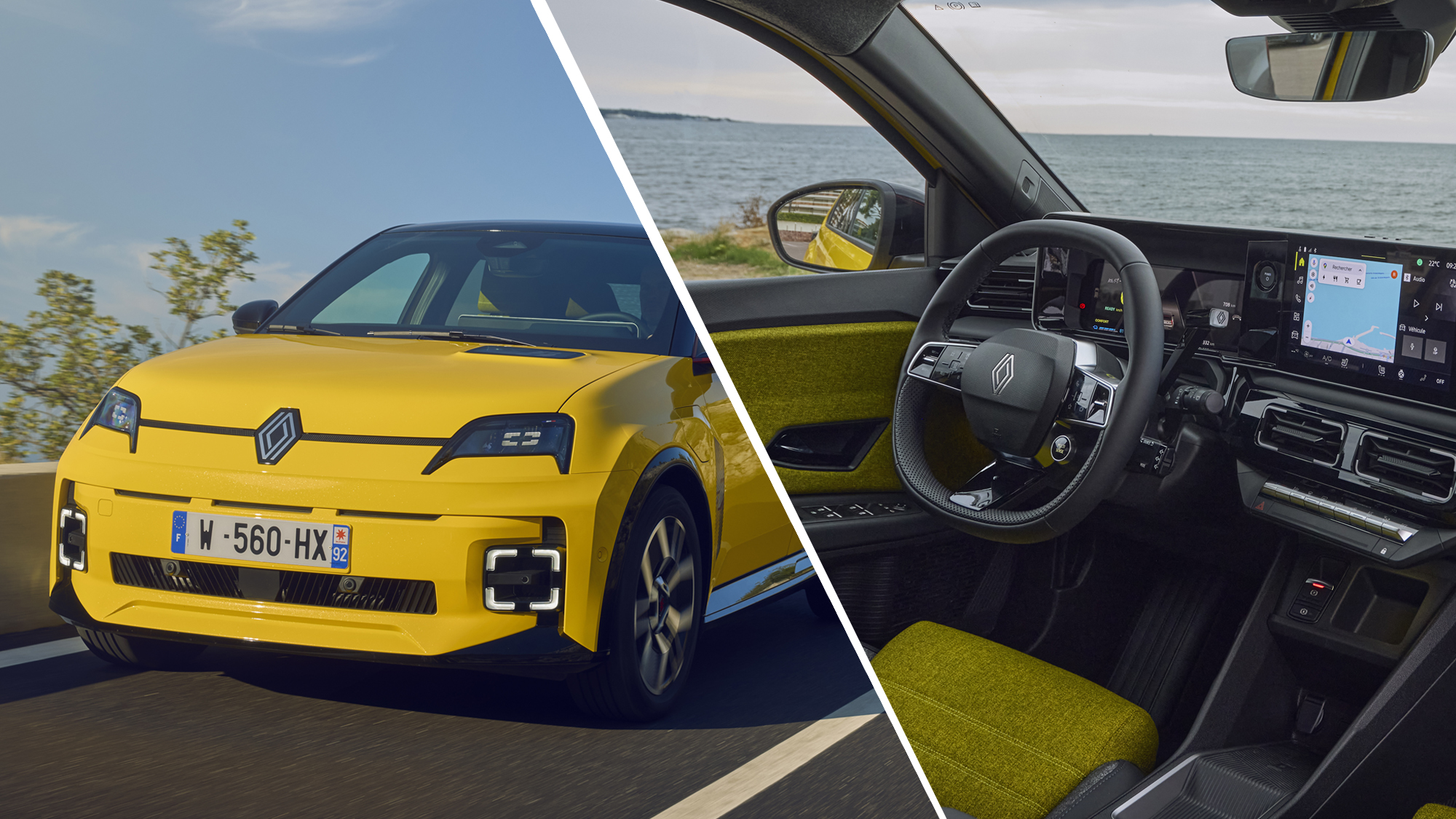
The Renault 5 is what the Brits would call a 'national treasure'. It’s not just a plucky little hatchback that arrived in France during the 1970s, but an affordable, mass market machine that would liberate an entire country during multiple crippling fuel crises.
Its mission from the very outset was clear: the Renault 5 needed to be fuel efficient, cheap to buy, easy to maintain and offer a little 'je ne sais quoi' during an otherwise fairly bleak and dreary period for many who were living in Europe.
As a result, the original Renault 5 went on to sell 5.5 million units across five continents from 1972 to 1985 and is now woven into France’s very history. It is completely understandable why launching an all-electric version of this classic has been such a big deal for the French manufacturer, but it's finally here – and I've taken one for a spin.

Renault boss Luca de Meo likes to regale the press with stories of falling in love with an early design study, claiming he knew the modern EV had to be spawned after first laying eyes on a basic orange mock-up hiding in plain sight at the firm's design HQ in Paris.
But really, de Meo also knew the world was crying out for a more affordable electric vehicle, one that wasn’t just reserved for the well-heeled in society and one that would sell in big numbers. The transition to electric propulsion might not be this decade’s oil crisis, but it’s certainly proving a pain in the side for the world’s automakers.
A retro ride
The Renault CEO’s tale of his “crush inspired by an orange mock-up” might be the stuff marketing dreams are made of, but it’s also easy to see where he’s coming from. The Renault 5 E-Tech 100% Electric (its clunky full name) is a striking piece of modern design.
Instantly recognizable as an homage to the 1970s car, packing styling elements of the 5 and the coveted Renault 5 Turbo, the modern EV stops passers-by in their tracks. It is compact, cute and with enough assertiveness to appeal to the widest audience possible.
Get daily insight, inspiration and deals in your inbox
Sign up for breaking news, reviews, opinion, top tech deals, and more.
Prices will start at £23,000 (around $30,000 / AU$45,000) when order books open early next year, with a simple pricing strategy seeing the range top out at £27,000 ($35,000 / AU$52,000), yet it is choc full of clever and quirky features.
There’s an external battery charge indicator where the original Renault 5 Turbo’s air intake once resided. This number five is split into five illuminated sections, each representing 20% of the battery’s capacity, which light up when the owner approaches the car.
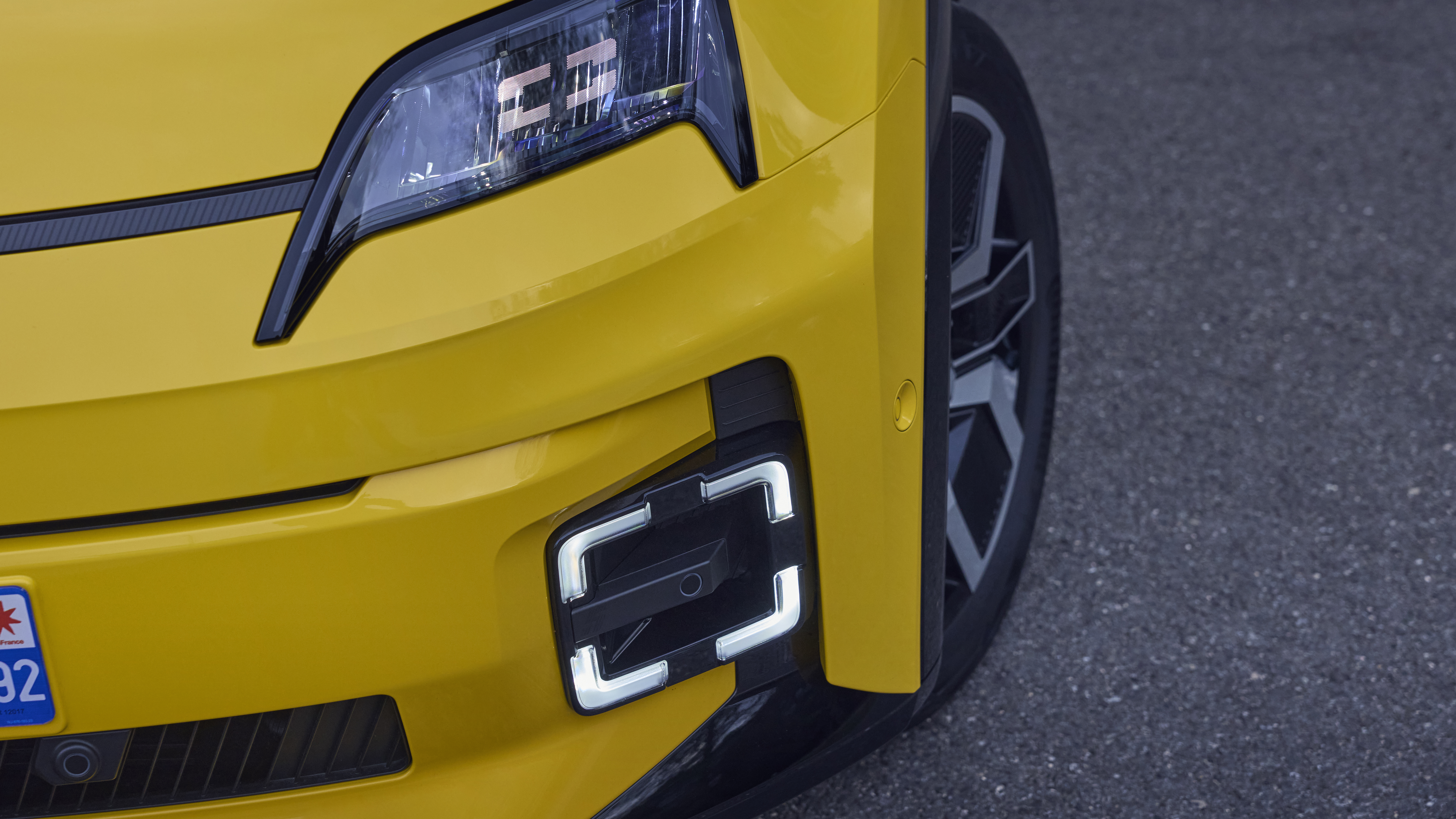

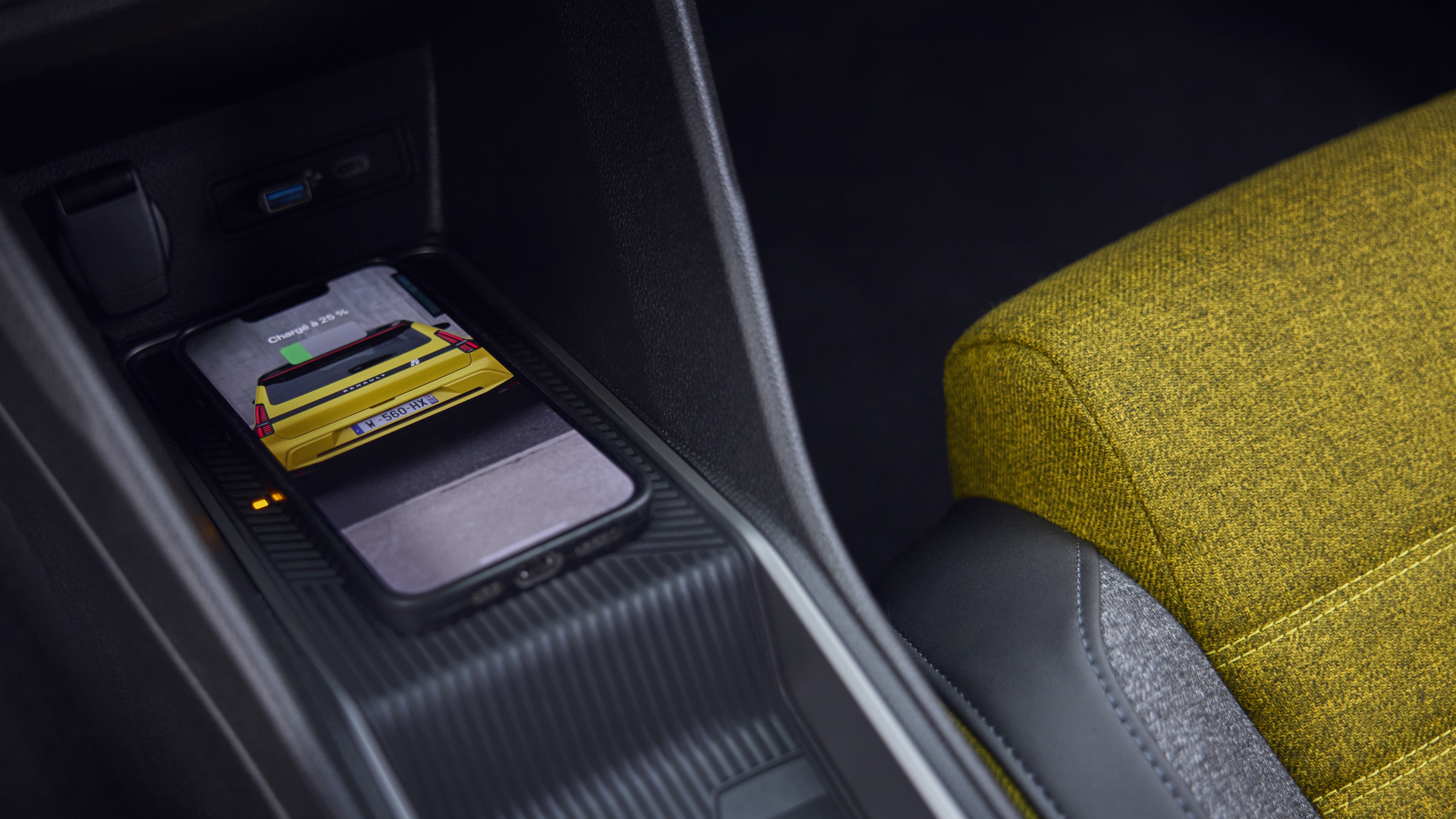

The front LED lamps perform a little ‘wink’ upon approach and music by French electronic music composer Jean-Michel Jarre blares from the sound system as the infotainment fires up.
At this price, the interior is exceptional, with figure-hugging bucket seats covered in a fabric pattern that harks back to the Renault 5 Turbo, while all trim levels receive two digital displays: one in front of the steering wheel and an infotainment screen, both measuring 10-inches (7-inch driver display in entry-level models).
At this price, the interior is exceptional, with figure-hugging bucket seats covered in a fabric pattern that harks back to the Renault 5 Turbo.
Renault’s OpenR link system is powered by Google, so comes complete with Google Maps baked in. This allows for easy EV navigation, complete with live information on charger availability as well as routing based on the vehicle’s range.
It also opens up access to the Google Play Store and a plethora of entertaining apps, including video and audio streaming services. In fact, during one stint of downtime (ahem, we got a puncture), I sat there playing a pop music quiz to while away the minutes.
Tech that works
Similar to what Fiat did with its revived 500 and the ultra-successful relaunch of the Mini brand, Renault’s all-electric 5 is the French marque’s attempt to create a product in the brand’s image, so it comes with a number of unique touches that give it plenty of character in an often faceless EV market.
There’s an AI assistant called Reno, for example, who pops up on the infotainment system and can help with a variety of queries. Speaking to Renault staff, I was told he comes pre-programmed with 200 answers to the most common vehicle-related questions, including remaining range, how far the car can travel on the battery level and even help with locating nearby charging points.
Reno is connected to ChatGPT, so can answer pretty much any random question you can throw at him, but the animated character (complete with facepalm emotes) will also proactively step in and suggest turning on the heaters if it detects window fogging.

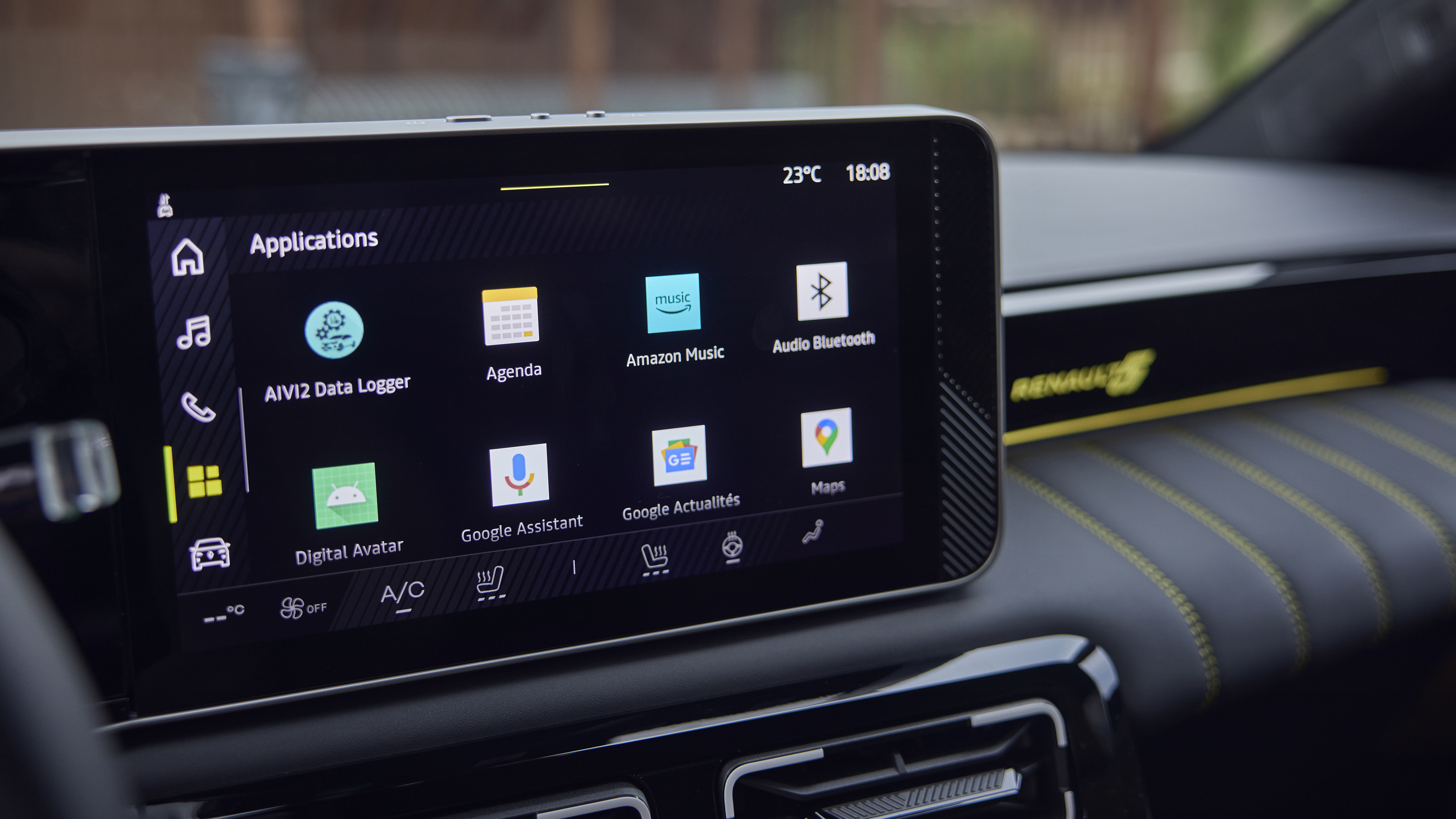
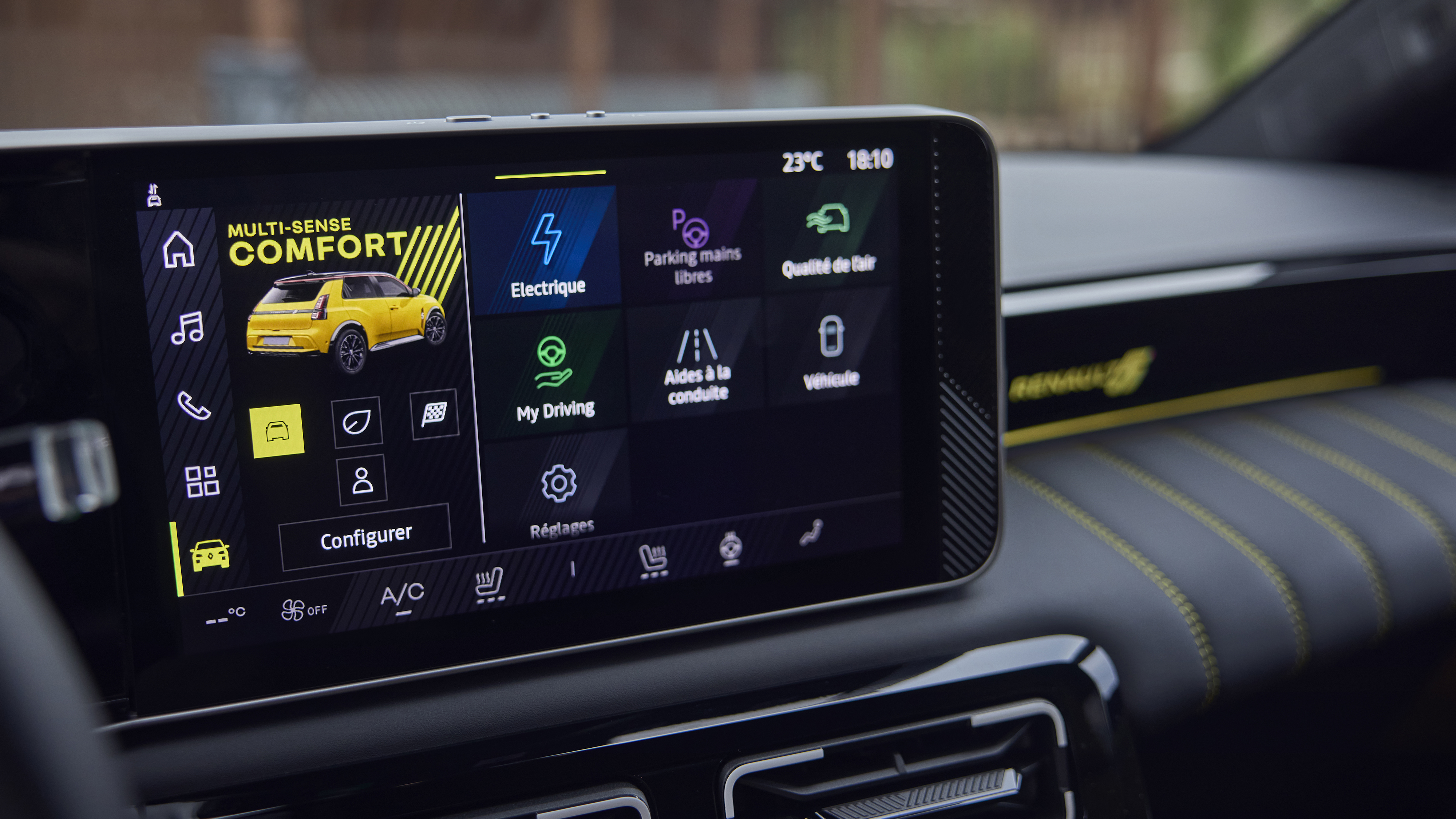

Similarly Franco-idiosyncratic is the optional wicker basket that has been designed by renowned basket-maker Marguerite Herlant to carry the daily baguette. “No more flour crumbs on your lovely upholstery!” reads the marketing materials.
In some cases, this would all come across as a little try-hard, but it really works in the Renault 5. Perhaps more importantly, it elevates the interior to something more premium than its sticker price would suggest.
I was particularly impressed with the My Safety Switch, which allows all of the nannying active safety systems to be switched off with a neat, accessible physical button.
During testing, I was particularly impressed with the My Safety Switch, which allows all of the nannying active safety systems to be switched off with a neat, accessible physical button. There are also hard keys for air conditioning and other important vehicle functions.
Above all else, it’s simple to operate and the infotainment system works, rather than trying to do too much and failing. Even those opting for the base level model will get Apple CarPlay and Android Auto as standard, but it is worth parting with a little extra to use Google Maps natively.
Piling on the personality
Renault’s original 5 was the sort of cheap and cheerful car you grabbed by the scruff of the neck and hooned (responsibly) around country lanes. I had a friend with a penchant for Renault 5 Turbos and it is no coincidence that he became the king of lift-off oversteer around slippery roundabouts. He was like a budget version of the American rally driver Ken Block.
The new incarnation isn’t quite as hilarious to pilot but it’s not a dullard either. There’s multi-link suspension at the rear, improving grip and handling, while the 1,449kg overall weight means this doesn’t feel like many of the numb and bloated EVs on the market.
Its compact proportions make it great for weaving in and out of busy traffic, while the short overhangs ensure it can be reversed parked into tight spots with ease.
That said, it’s a proper five-door hatchback, so adults can clamber into the rear – albeit with slightly restricted legroom – and there’s enough space in the deep boot area for weekend bags. Amazingly, this is also the only electric city car that is rated to tow a trailer weighing up 500kg.


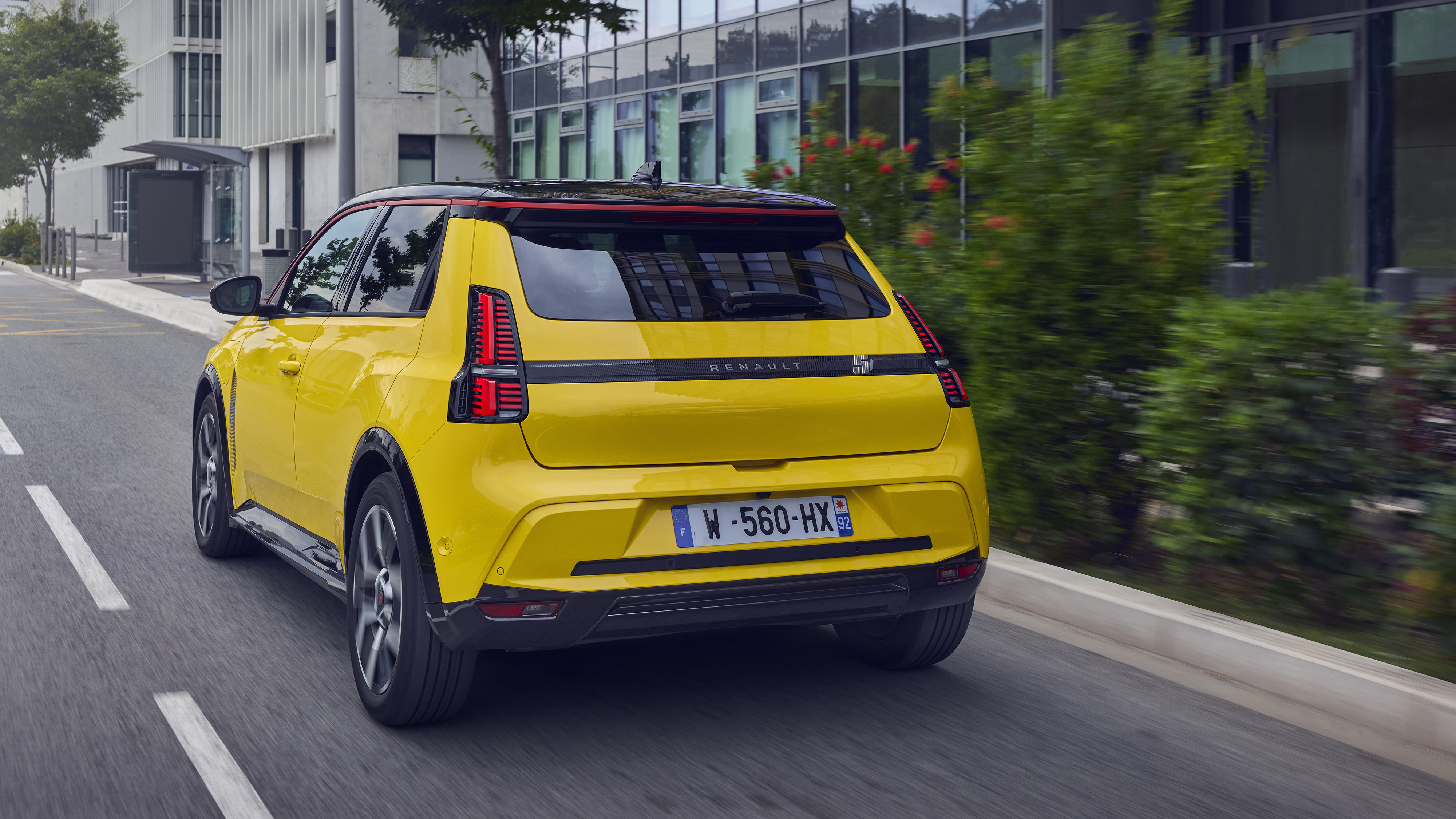

It will arrive in Europe with the choice of two powertrains and battery capacities, the most expensive cars using a 110kW electric motor, developing 150hp, or a smaller 90kW (120hp) unit that’s mated to a 40kWh battery.
The more potent motor comes with a 52kWh battery pack, meaning it is capable of traveling around 250 miles on a single charge. Even the lower-powered version can hit around 190 miles between top-ups.
Later next year, Renault will offer an even cheaper version later in the life cycle but the more powerful vehicle, which I drove during testing, feels like the right blend of straight-line performance (0-62mph in 8 seconds) and comfort at motorway speeds.
Point the electric Renault 5 towards a twisting mountain pass and it delivers on the fun, with agile handling and sharp steering making it a giggle to thread through corners. Load up the front tires and they’ll squeal a bit in protest, as this is still a heavy car, but it doesn’t lumber around like some rivals.
Its compact proportions make it great for weaving in and out of busy traffic, while the short overhangs ensure it can be reversed parked into tight spots with ease.
What’s more, it’s not madly overpowered like some small electric vehicles, which means it never feels like too much of a handful on slippery surfaces. Sure, it’s not going to set the pulse racing like, say, a Hyundai Ioniq 5N, but it’s difficult to argue it that it’s not enjoyable to drive.
From the pointing and staring from random strangers on the street, to simple but effective in-car ambience, it is clear that Renault has nailed the brief with the new 5 E-Tech. It’s a small, affordable electric vehicle that puts smiles on faces and has the French tooting horns in appreciation.
With plenty of concern surrounding cheap, homogenous EVs flooding the market, it’s time that the so-called legacy automakers showed up and proved what decades of experience in car-making can achieve.
Renault has done just that, and let’s hope this opens the floodgates to a raft of cut-price, battery-powered passenger cars that will tip the balance in favor of electric propulsion.
You might also like...
- Toyota's portable hydrogen cartridges look like giant AA batteries – and could spell the end of lengthy EV charging
- Tesla's new Cybercab and futuristic 20-seat Robovan show it's lost its grip on reality
- Ten months after its release, the Tesla Cybertruck is finally getting Full Self Driving capabilities

Leon has been navigating a world where automotive and tech collide for almost 20 years, reporting on everything from in-car entertainment to robotised manufacturing plants. Currently, EVs are the focus of his attentions, but give it a few years and it will be electric vertical take-off and landing craft. Outside of work hours, he can be found tinkering with distinctly analogue motorcycles, because electric motors are no replacement for an old Honda inline four.